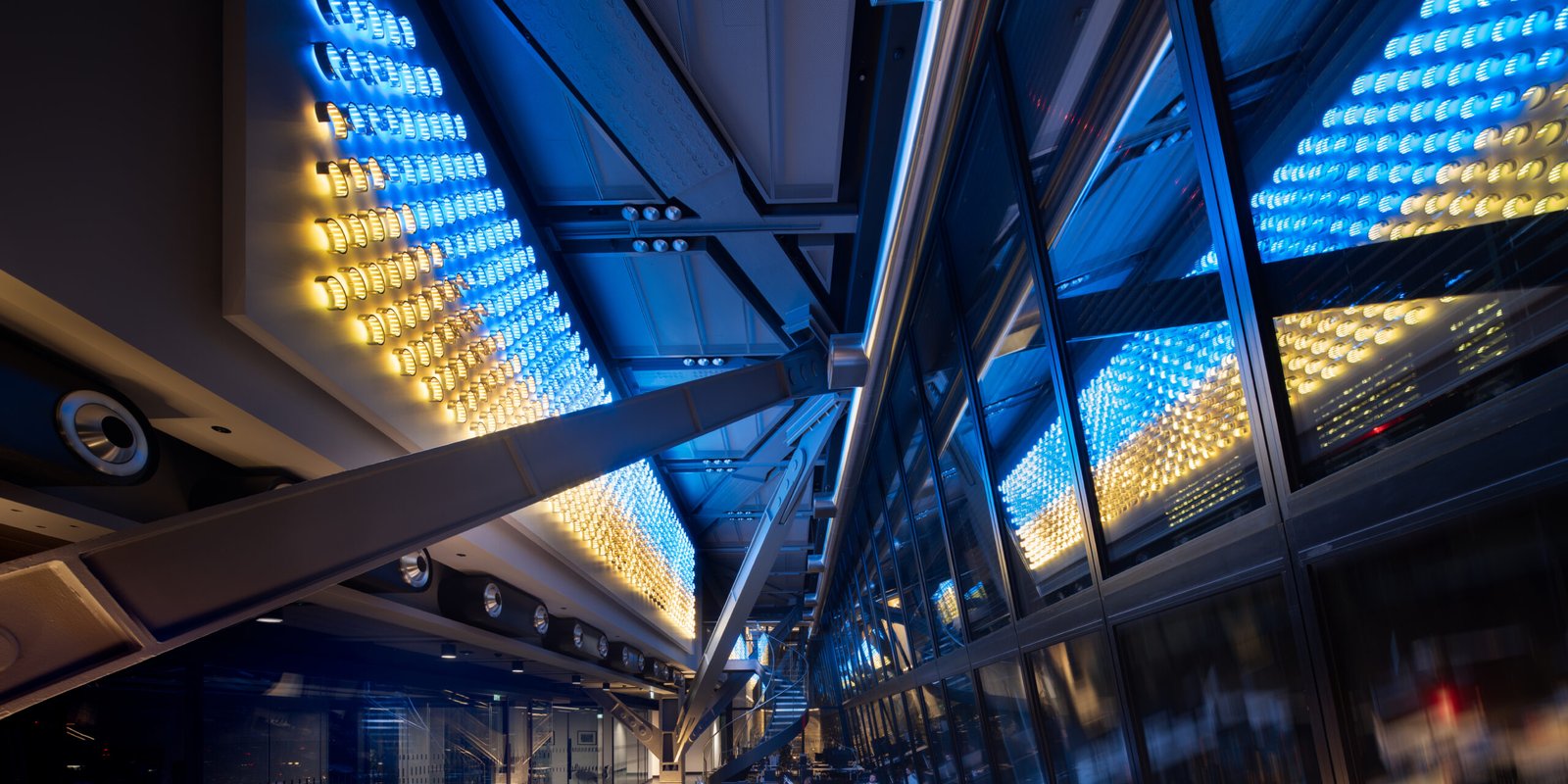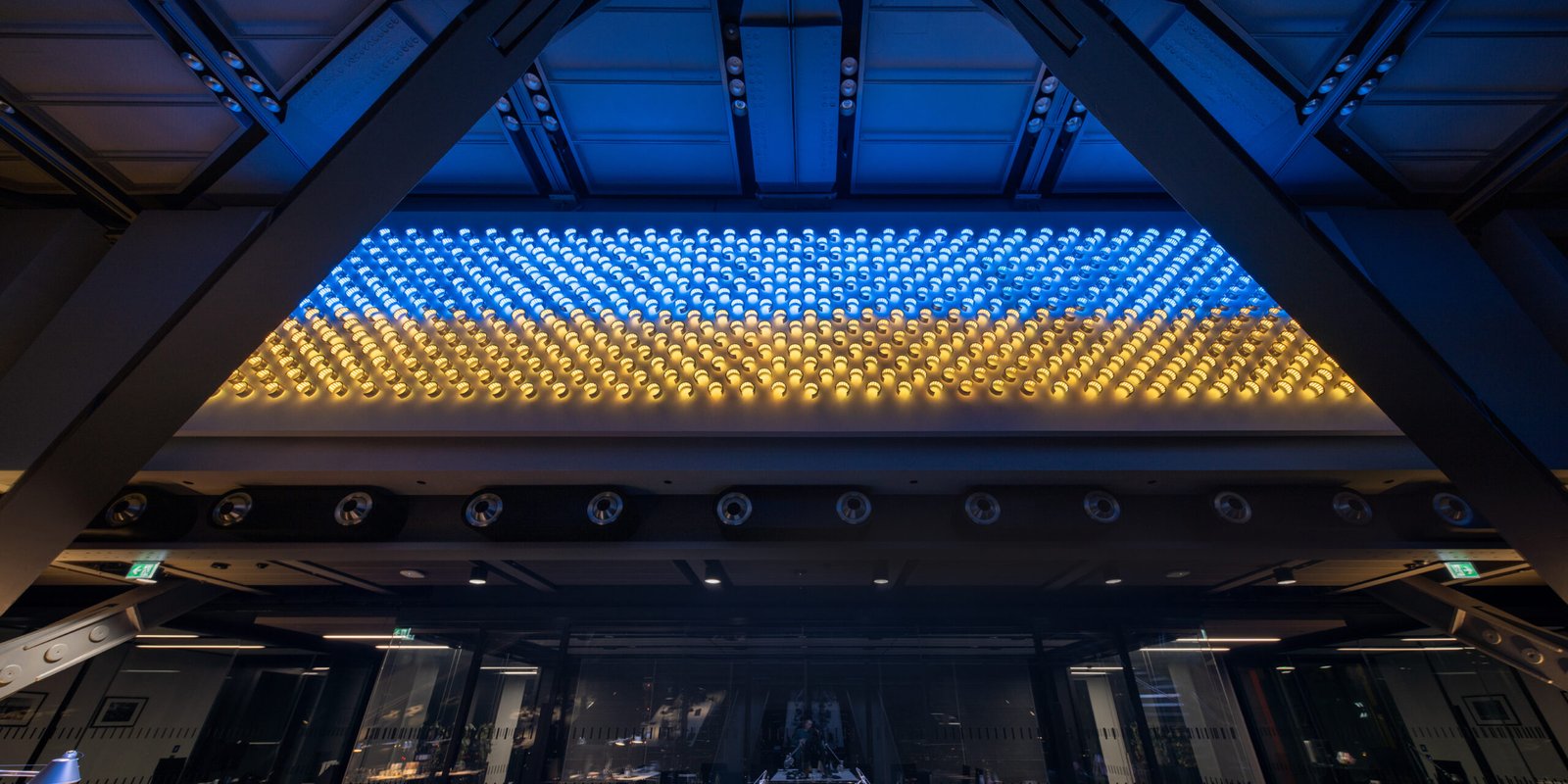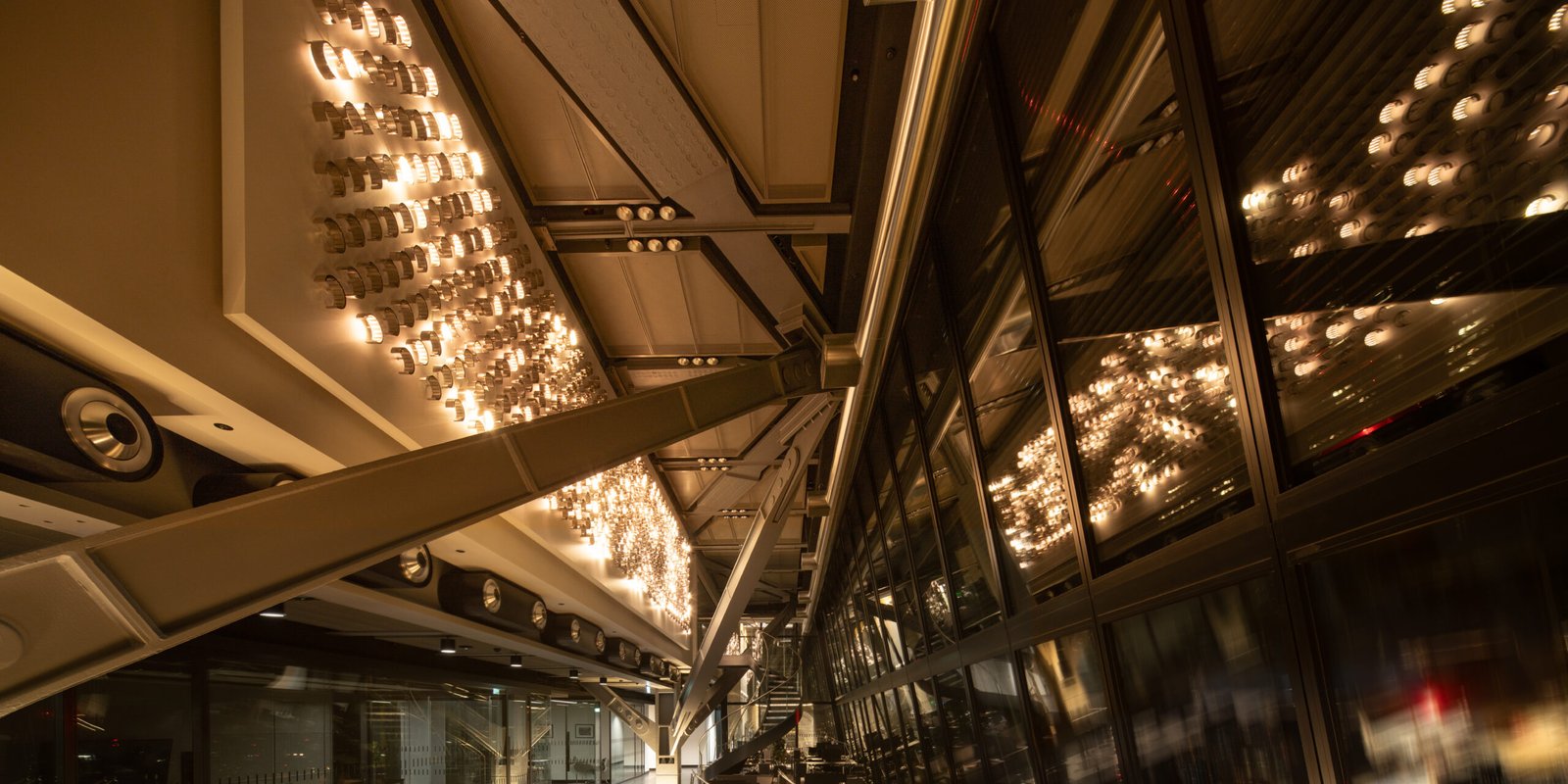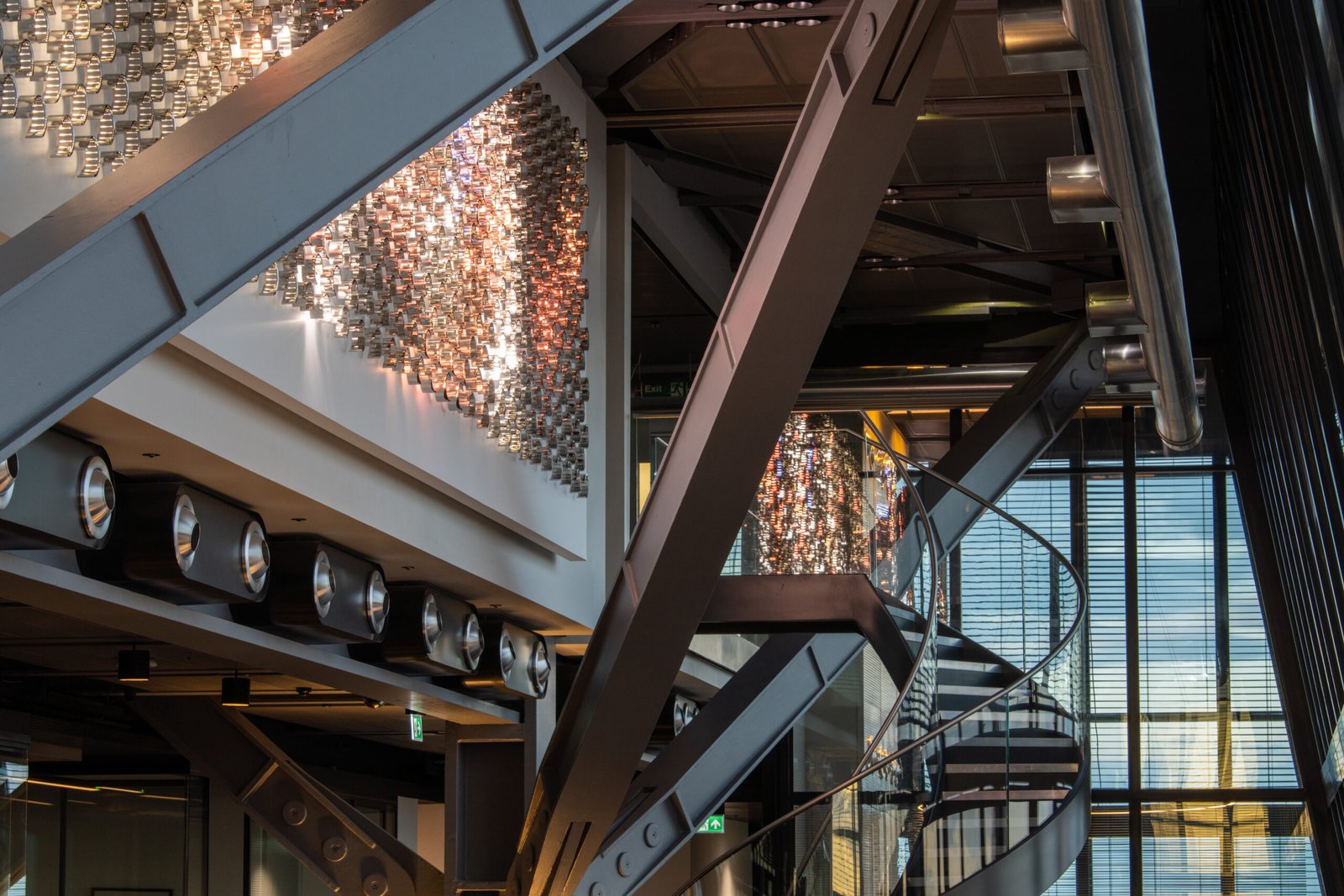Energy Dynamics
Job Role: Creative Technologist (Working For Jason Bruges Studio)
Date: December 2022
Venue: The Leadenhall Building
Video By Jason Bruges Studio
Energy Dynamics is an artwork built by Jason Bruges Studio for a Ukrainian power company whose office is situated on the top floor of one of London’s highest sky scrappers. This artwork went through many revisions as the concept of the artwork was originally made before the Ukraine-Russia war. Due to the war, the concept and storyline of the artwork had to change, however it still kept the main ideology at the heart of the design and software.
The artwork, situated above the open plan office, faces out onto the London skyline to be seen by the world before. The artwork is made up of 598 C-shaped nodes, each with 99 custom addressable LEDs inside. Although the artwork is a uniform diagram, the content displayed on it shows an abstract map of Ukraine. 20 cities have been carefully selected to be displayed on certain nodes, and 14 power generation systems shown on different nodes. These power generation systems range from gas powerplants, to thermo, to wind farms and solar farms, capturing the complete portfolio of the power generation from the company.
During normal use, the content shows animated lines being drawn from power plants to cities on the map to symbolise where each city could potentially get it’s power from. The speed of the lines being drawn and the frequency is controlled by live data provided by the company.
The software has a webpage which is served to the client when they want to refine the artwork more. These extra controls allow the user to define what lines are being drawn on the map: Power from Gas, Power from Renewables and Power from thermo. There is an option to manually select a city or powerplant to be highlighted on the map to allow for easy identification. There is a button to turn the artwork into a bright Ukrainian flag which can be seen from the other side of the river at night. And finally there is an option to manually trigger the memorial mode, which automatically triggers at 11AM each day. This mode lights up 293 individual nodes (at current writing) on the artwork to commemorate each person from the company who has been killed during the war.
—-
Being the creative technologist on this project, my job was to ensure that the hardware and software all worked. I worked closely with the production designers at JBS to ensure that all the hardware to control each set of nodes could be mounted in a discreet but accessible way for maintenance, within the artwork. I also worked with them to ensure that the copious amount of cables needed to connect the nodes to the control hardware could be neatly routed in the structure. From there, with the help of the computational designer at JBS, I built out the software. We split this into two sections, I would build the back end of the software driving the artwork and the extra modes, and they would build the main content mode for the artwork. We worked on separate GIT branches and then merged them together once we had completed our tasks. We then both proceeded to build out the client face webpage to allow for extra functionality. We created a digital twin of the artwork to visualise how the artwork would behave with certain modes – and to refine the modes before we got to site. To do create the digital twin I used unity.
This project took two weeks of overnight working during the December months to install.







